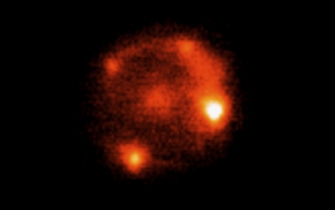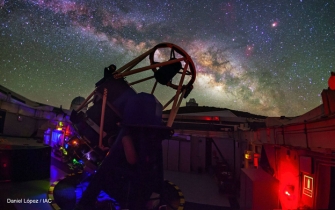GROWTH Technology
 We are in the era of Big Data and data-driven science. Drawing insights based on effective analysis of
vast amounts of data is an integral part of how we approach modern science, engineering, economics, and
even politics. Since the advent of affordable sensor and data-storage technologies, astronomers have
continued to gather ever larger volumes of data. Learning how to process these data and extract valuable
information has, therefore, become an important part of their skillset and toolbox. Often,
techniques and algorithms for astronomical data processing are borrowed by and applied in other fields in science and industry.
GROWTH will develop a set of tools to extract rare, actionable information from a torrent of imaging
data. These tools will directly tackle challenges faced by future time-domain sky surveys like
LSST as well as other Big Data fields.
We are in the era of Big Data and data-driven science. Drawing insights based on effective analysis of
vast amounts of data is an integral part of how we approach modern science, engineering, economics, and
even politics. Since the advent of affordable sensor and data-storage technologies, astronomers have
continued to gather ever larger volumes of data. Learning how to process these data and extract valuable
information has, therefore, become an important part of their skillset and toolbox. Often,
techniques and algorithms for astronomical data processing are borrowed by and applied in other fields in science and industry.
GROWTH will develop a set of tools to extract rare, actionable information from a torrent of imaging
data. These tools will directly tackle challenges faced by future time-domain sky surveys like
LSST as well as other Big Data fields.
A major challenge in time-domain astronomy is identifying the few interesting transient candidates in an ocean of false positives. To address this challenge, GROWTH will create an autonomous transient classification and follow-up optimization system called an event broker. Building on automated machine learning tools developed and tested on the RAPTOR robotic telescope network and PTF, the event broker for GROWTH will further include cutting edge methods such as Bayesian Belief Networks, Support Vector Machines, Random Forest, and Sparse Representations with Learned Dictionaries.
Robotic Telescopes
 Optimal understanding of transient events critically depends on the timely and coordinated operation of the observational
facilities that ultimately provide the imaging or spectroscopic data used for the subsequent data analysis. Even the much
smaller sample of transient events, deemed interesting by our machine learning algorithms far exceeds the capacity of
available follow-up instruments. Therefore, roboticizing the telescopes in the GROWTH network so that we can not only
automatically identify emerging events, but also optimize and execute follow-up observations is critical to the success
of the project. We will develop a decision support system for managing diverse networks of telescopes that
can detect potential anomalies by fusing multiple real-time data feeds, and trigger optimized responses
to a small fraction of high priority events. This technology will be made available online to other observatories interested in
roboticizing their instruments.
Optimal understanding of transient events critically depends on the timely and coordinated operation of the observational
facilities that ultimately provide the imaging or spectroscopic data used for the subsequent data analysis. Even the much
smaller sample of transient events, deemed interesting by our machine learning algorithms far exceeds the capacity of
available follow-up instruments. Therefore, roboticizing the telescopes in the GROWTH network so that we can not only
automatically identify emerging events, but also optimize and execute follow-up observations is critical to the success
of the project. We will develop a decision support system for managing diverse networks of telescopes that
can detect potential anomalies by fusing multiple real-time data feeds, and trigger optimized responses
to a small fraction of high priority events. This technology will be made available online to other observatories interested in
roboticizing their instruments.




